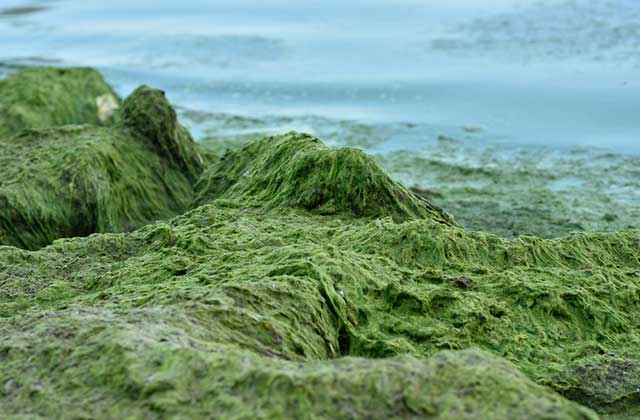In recent news, the local health unit in Thunder Bay, Ontario confirmed the presence of blue-green algae in Icarus Lake and Madeline Like. This was days after the Thunder Bay District Health Unit or TBDHU found the same algal bloom progressing in Warnica Lake. TBDHU released an advisory to avoid going near those waters while toxin testing is being conducted and there are indications of algal bloom.
What are blue-green algae exactly? And how do they affect people, animals, and the surroundings?
Understanding blue-green algae
Despite its name, blue-green algae are not algae after all. They are a type of bacteria, more commonly called cyanobacteria. Found in low numbers, these organisms proliferate quickly in warm, shallow parts of lakes or bodies of water. Given the right conditions, these bacteria can “bloom”.
Not all blue-green algae blooms are harmful. But there are kinds of blue-green algae that are known to be toxic to both animals and humans. The toxic ones are known to thrive in warm, less turbulent waters, and sunny areas with temperatures going higher than 75°F. The blooms are common during summer and early fall.
What do blue-green algae look like?
When cyanobacteria develop into algal blooms, the surrounding lake or water areas are often observed to look like spilled green paint, green pea soup, or spilled turquoise paint. It can also manifest like floating greenish scum on the water surface. Sometimes, algal blooms are inconspicuous, especially if they only cover small areas of the lake. But another tell-tale sign of cyanobacteria bloom is the swampy smell.
What are the possible health risks posed by cyanobacteria?
Exposure to these organisms may result in adverse health infects in animals and people. High amounts of cyanobacteria toxin exposure can lead to nausea or vomiting; diarrhea; throat, eye, or skin irritations; and shortness of breathing or allergic responses. As a worst-case scenario, exposure to high levels of cyanobacteria toxins may cause health risks on the nervous system and liver of animals or people. Blue-green algal blooms are known to have recorded deaths in livestock and pets that ingested the algal scum. The good thing is, blue-green algal blooms do not last long, and health authorities are usually quick to detect them, so sustained, long-term exposure to cyanobacteria toxins is usually minimal.
Here are some of the reasons why you must avoid going to the areas where an algal bloom is present:
1. Recreational health risks
Recreational health risks happen if you swim, fish, wade, or boat in places with a reported algal bloom. You can get the toxins through accidentally swallowing water, skin contact, inhalation of airborne droplets, and consumption of fish or other food caught from the area.
2. Household health risks
There is a possibility of toxin exposure if you use water from the affected area in your household. Bathing, washing, or cleaning using surface water is highly discouraged. You can get exposed by drinking or ingesting the toxins, inhalation of droplets, and skin contact. People with a sensitivity to toxins are usually the most at risk and may experience mild symptoms.
3. Drinking water health risks
As a strict health rule, people should never even think of drinking from an untreated water source. If you are not availing of the treated public water system and are using water directly from its natural source for cleaning and preparing food, drinking, cooking, and other chores, you are going to expose yourself to cyanobacteria toxins. Even if you are filtering your water, or practicing DIY treatment procedures, you may still not be protected from blue-green algae toxins. The best thing you can do is to apply to a public water system. Your local supplier will make sure that your water is safe to drink and treated to remove all possible contaminants, cyanobacterial toxins included.
Avoiding exposure
• Avoid recreational activities on lakes and bodies of waters affected by cyanobacteria proliferation.
• As much as possible, do not drink from untreated water sources.
• Do not eat fish or other catch from a lake with conspicuous signs of algal bloom.
• Do not let your pets unattended. Small dogs can be more susceptible to toxins because they tend to ingest more water when swimming or playing in the water. If you are avoiding the affected area, your pet should too.
If you live near any water area and you suspect that there is a possibility of a blue-green algal bloom, report it immediately to authorities to have the place checked and tested for toxicity.
If you experience symptoms like diarrhea or nausea and vomiting after eating fish caught in the affected lakes or accidentally ingesting untreated water, call a doctor for help. If you cannot immediately schedule a meeting with a physician in a walk-in clinic Thunderbay, you can always consider seeking an online doctor. Visiting online clinics eliminates the waiting time and provides you access to healthcare without leaving the comfort of your home. Find an online doctor today to treat symptoms of blue-green algae toxin exposure.


